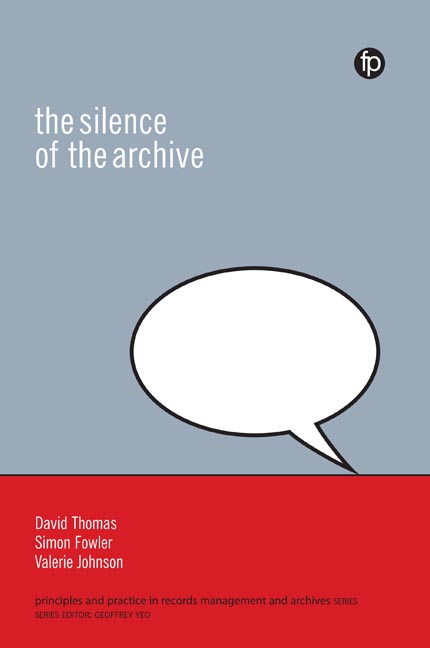Book contents
7 - Are things getting better or worse?
Published online by Cambridge University Press: 08 June 2018
Summary
The most significant change in archives over the past 30 years and continuing into the future has been the move to the digital. While this has had huge benefits in terms of availability of and access to resources, it is posing challenges which may lead to silences in the future.
The major benefit of the move to the digital is the improvement of access which it has facilitated. Now catalogues are largely available online and increasing numbers of digital copies of paper records and born-digital originals are also accessible. However, there are concerns about the way in which users interface with catalogues (see Chapter 4). Anyone who has been involved in putting catalogues online will rapidly come to learn, that, while there are good standards for describing records, there are no similar standards for web interfaces for archive catalogues and the process of making material available is a constant and sometimes wearing debate with web designers and other IT professionals. It is important that we respond to the criticisms of online catalogues which Dorian Gerhold and others have made. While they acknowledge the huge benefit they bring, they have serious concerns about usability (see Chapter 2).
Recently, there has been some interesting thinking and some work done to make catalogues more inclusive and less biased and thus to reduce silences (see Chapter 6). However, there still remain problems. The usability and neutrality of archival catalogues is under attack. People who have approached archives from a design perspective have noted that digital archives, in particular, are dynamic. Cataloguing, description and digitization are slow and costly processes; as such archives exist in various forms of incompleteness, yet institutions are under pressure to share digital collections in order to better engage with a contemporary audience. Recently, Tom Schofield, Lecturer in Digital Cultures and his colleagues at Newcastle University did some work to understand the users of the archive of the poetry publisher Bloodaxe Books. Their initial research demonstrated concerns with the failure of the catalogue to reflect the views of potential users: ‘virtually all of the aspects identified as interesting by the participants were not intended to be described in metadata in the forthcoming catalogue, and thus would not be represented in future interfaces to the archive’ (Schofield et al., 2015, para 23).
- Type
- Chapter
- Information
- The Silence of the Archive , pp. 163 - 180Publisher: FacetPrint publication year: 2017
- 1
- Cited by



